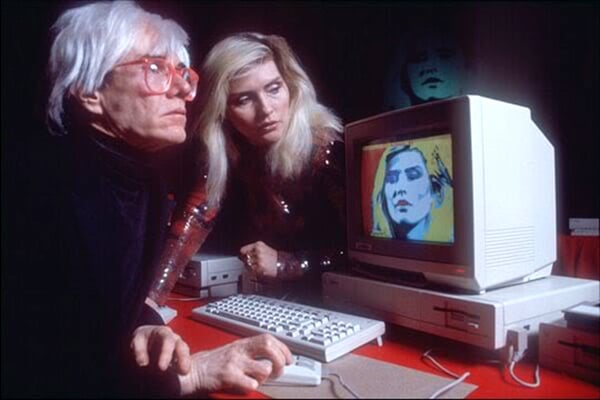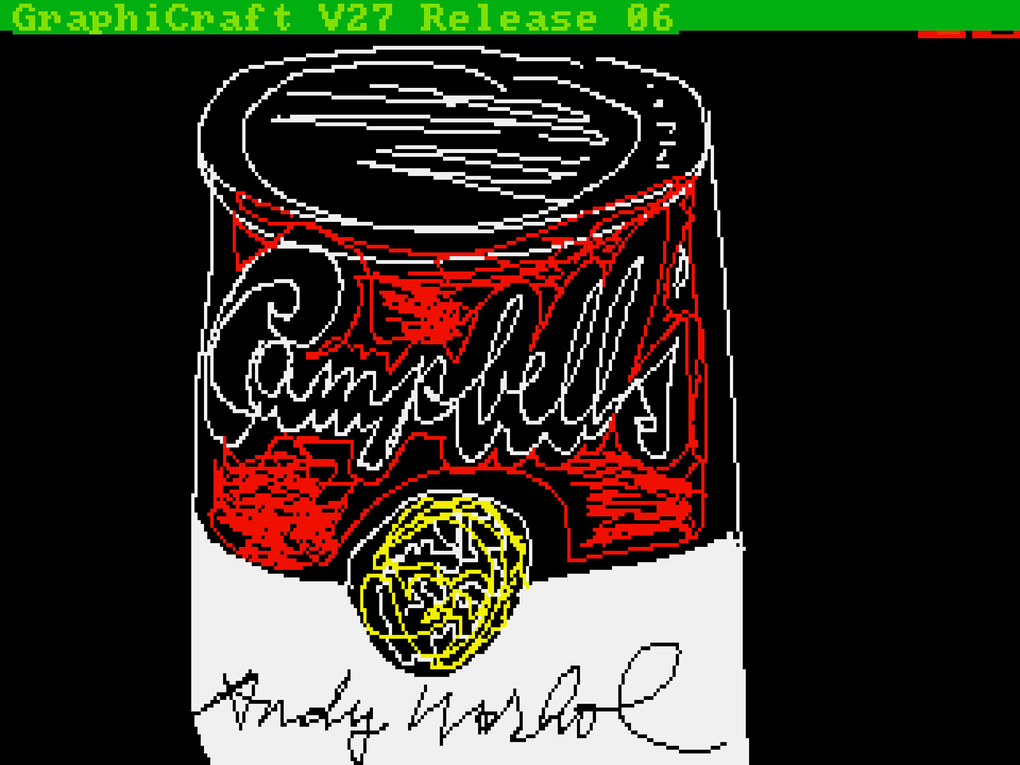Art World
Cory Arcangel Excavates Andy Warhol’s Digital Art From Ancient Floppy Disks
Warhol's early digital works, lost for 30 years, go on view in Pittsburgh in May.

Warhol's early digital works, lost for 30 years, go on view in Pittsburgh in May.

Sarah Cascone

The floppy disk may be extinct today, but it was cutting-edge technology when Andy Warhol used it to store a number of digital artworks and doodles created on his Commodore Amiga home computer in the mid-1980s. These early experiments in digital art have now been recovered, reports the BBC.
Among the rediscovered artworks are a new take on Warhol’s iconic Campbell’s soup can, rendered as if using Microsoft Paint, and a computer-generated version of Botticelli‘s The Birth of Venus that has been given a third eye. The Commodore Amiga computer company had commissioned the artist to produce art using the Amiga 1000 to promote the new product.
It took three years to successfully recover the artworks, which were stored in an obsolete format, but they might have remained lost to time were if not for a distinctly modern bit of technology: YouTube. Artist Cory Arcangel was browsing the site when he happened upon a video of a news conference of Commodore Amiga’s launch in 1985 that showed Warhol manipulating a digital image of Blondie singer Debbie Harry.
Intrigued, Arcangel contacted Tina Kukielski, a curator at Pittsburgh’s Carnegie Museum of Art, in 2011. The two reached out to the Andy Warhol Museum, also in Pittsburgh, to see if they might have the files in their archive.

An Andy Warhol computer drawing recovered from his Amiga home computer.
Courtesy the Andy Warhol Museum, Pittsburgh.
Though the Harry image was part of the museum’s collection, there were no other records of the artist’s forays into computer art. A more thorough search uncovered the old Amiga computer and a number of floppy disks, but there was no means of knowing what the dated storage devices contained.
Arcangel next enlisted the Frank-Ratchye Studio for Creative Inquiry at the Carnegie Mellon University Computer Club for their help in accessing the decades-old files. According to a press release from the Warhol Museum, the club boasts a collection of “obsolete computer hardware” and is known for its “prize-winning retro-computing software development.”
Data was first copied off the floppies using magnetic imaging tools, revealing files with titles like “campbells.pic,” “flower.pic,” and “marilyn1.pic,” but modern Amiga emulators couldn’t open the obscure “.pic” format. Eventually, reverse engineering recovered 18 files, 12 of which the artist had signed (see report from the Studio for Creative Inquiry).
“Warhol remained interested in new technology throughout his life,” notes Warhol Museum director Eric Shiner in the press release. “These computer generated images underscore his spirit of experimentation and his willingness to embrace new media.”
The Warhol Museum filmed a documentary of the recovery product which will debut at the museum on May 10. It will then be available online at nowseethis.org.